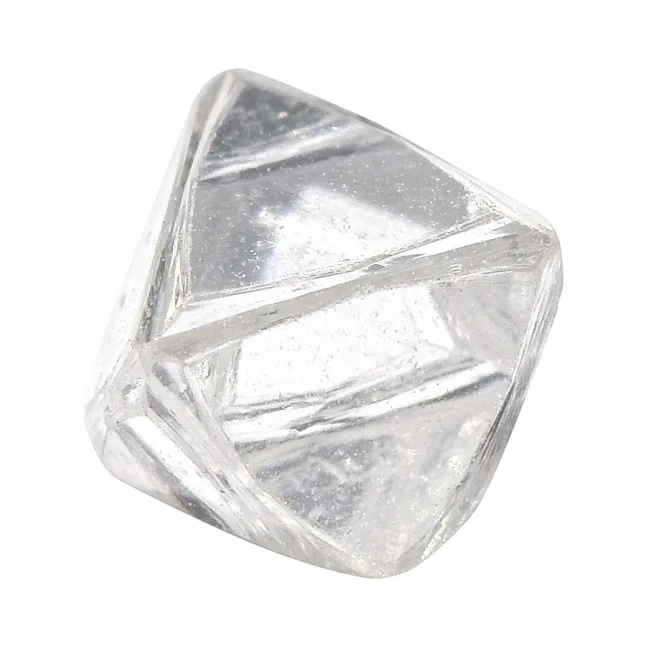Wearing Uncut Diamond Rings | Rare carat
We are fortunate to live in an era where natural diamonds are readily available on a scale that is historically unprecedented. A style that has been gaining traction on the market is jewelry featuring uncut diamonds. Called “rough” or, alternatively, “raw”, stones, the use of uncut diamonds opens a completely new aesthetic and style beyond what cut and faceted diamond rings offer.

What is an uncut diamond?
Uncut diamonds have a distinctive beauty all their own. Historically, some cultures overtly refused to cut or polish diamonds for fear of destroying their inherent magical qualities. The actual technology which allows for diamond cutting is relatively new, with the first devices crafted in the fourteenth century. Rough diamonds are each completely unique in terms of shape, color, size, and clarity. They won’t sparkle like faceted stones, rather, their beauty is more earthly, organic, and can even be described as spiritual in nature. As a result, each is set into a mounting created or modified specifically for them. This means that your rough diamond ring really is the only one like it in the world!
So, what do rough diamonds look like?
Ideally, diamond crystals grow as octahedrons. This shape basically looks like two pyramids with their bases stuck together. A few precious rings have survived from antiquity which highlight these rough pyramidal stones. However, conditions in Mother Earth are rarely ideal and diamond crystals are exposed to different environments as they are pushed up towards the Earth’s surface. As a result, they come out of the ground in a variety of sizes and shapes.
A major benefit of raw diamonds is that you may see some of the stone’s beautiful natural growth markings on their surface. These markings include trigons (triangular depressions set within one another which I find to be particularly spectacular!), parallel grooves, and square/rectangular depressions. Synthetic diamonds won’t have these tell-tale marks but artificial ones may be etched into their surfaces to mimic their natural counterparts.
What Goes into Finding a Rough Diamond for Jewelry?
When it comes to mining in the Modern Era, there has been a clear distinction between stones that are destined for industrial purposes and stones that are set aside for use in jewelry. Gem-quality stones with good clarity and shape are separated from the irregular or broken stones which have many inclusions and internal fractures. However, this line becomes blurred when jewelers look for unique rough stones to be used in their raw form.
When searching for uncut diamonds, you may come across the term “Bort”. These stones are irregularly shaped, highly fractured, may be a yellowish, brownish, or greyish color, and might be cloudy. Due to their splintered crystal structure, these stones are not considered to be “cuttable”, and are at risk of being discounted as “industrial-grade” and subsequently destroyed. However, their inherent uniqueness makes them good candidates for distinctive rough diamond rings. In fact, you will notice the trend of rough stone rings having obvious inclusions rather than showing a glassy perfection. Many also display some color. This is an intentional artistic choice made by designers as interesting inclusions and colors add to the uniqueness of each ring.
How to Care for an Uncut Diamond Ring
There are some factors that you should keep in mind when wearing a rough diamond ring. First, remember that obvious inclusions, while very beautiful, compromise the durability of the diamond crystal to a certain degree. Also, diamonds have invisible cleavage planes. This means that, if the stone is hit from the right angle, it will split. Faceted stones are usually cut so that the mounting covers this vulnerable angle. However, rough diamonds may not be protected in this way. It is a good idea to wear rough diamonds in protective bezel-settings or in prong-settings which feature lots of metal to hold the stone.
In terms of pricing, you will find that raw stones are less expensive than faceted ones. As there is no need to employ cutters (Mother Earth took care of the shaping!), the cost to produce rough diamond rings is lower than for faceted jewelry. This may allow you to find an exceptional, much larger stone that still fits into your budget!

